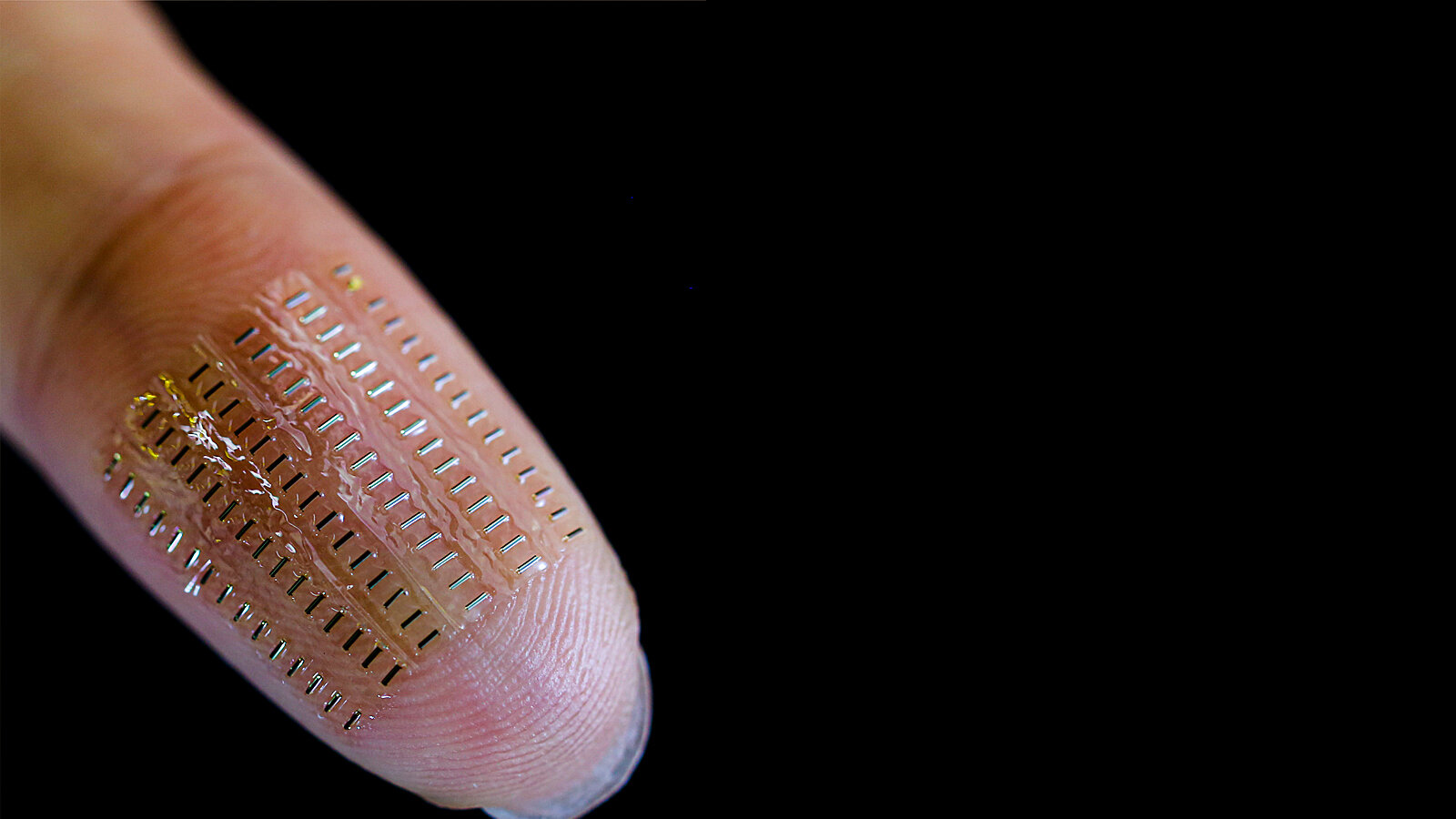Researchers from the Chemnitz University of Technology, IFW Dresden, and IPF Dresden combined miniaturized electronics with some origami-inspired fabrication for this tiny super-capacitor.
The composition of these tiny bio-super-capacitors comprises a stack of polymers with light-sensitive photo-resist material that acts as the current collector. It also comprises a separator membrane, and electrodes made from an electrically conductive bio-compatible polymer called PEDOT: PSS. The overall volume of the sheets occupies less space than a grain of dust.
Chemnitz University of Technology (German: Technische Universität Chemnitz) is a public university in Chemnitz, Germany. With over 9,000 students, it is the third largest university in Saxony

This storage system opens up possibilities for intravascular implants and microrobotic systems for next-generation biomedicine that could operate in hard-to-reach small spaces deep inside the human body. For example, real-time detection of blood pH can help predict early tumor growing. “It is extremely encouraging to see how new, extremely flexible, and adaptive microelectronics is making it into the miniaturized world of biological systems”, says research group leader Prof. Dr. Oliver G. Schmidt, who is extremely pleased with this research success.
The fabrication of the samples and the investigation of the biosupercapacitor were largely carried out at the Research Center MAIN at Chemnitz University of Technology.
“The architecture of our nano-bio supercapacitors offers the first potential solution to one of the biggest challenges – tiny integrated energy storage devices that enable the self-sufficient operation of multifunctional microsystems,” says Dr. Vineeth Kumar, researcher in Prof. Schmidt’s team and a research associate at the MAIN research center.
Smaller than a speck of dust – voltage comparable to a AAA battery
Ever smaller energy storage devices in the submillimeter range – so-called “nano-supercapacitors” (nBSC) – for even smaller microelectronic components are not only a major technical challenge, however. This is because, as a rule, these supercapacitors do not use biocompatible materials but, for example, corrosive electrolytes and quickly discharge themselves in the event of defects and contamination. Both aspects make them unsuitable for biomedical applications in the body. So-called “biosupercapacitors (BSCs)” offer a solution. They have two outstanding properties: they are fully biocompatible, which means that they can be used in body fluids such as blood and can be used for further medical studies.
In addition, biosupercapacitors can compensate for self-discharge behavior through bio-electrochemical reactions. In doing so, they even benefit from the body’s own reactions. This is because, in addition to typical charge storage reactions of a supercapacitor, redox enzymatic reactions and living cells naturally present in the blood increase the performance of the device by 40%.
Performance stability even under realistic conditions
In order to maintain natural body functions in different situations, the flow characteristics of the blood and the pressure in the vessels are under constant change. Blood flow pulsates and varies according to vessel diameter and blood pressure. Any implantable system within the circulatory system must withstand these physiological conditions while maintaining stable performance.
The team therefore studied the performance of their development – similar to a wind tunnel – in so-called microfluidic channels with diameters of 120 to 150 µm (0.12 to 0.15 mm) to mimic blood vessels of different sizes. In these channels, the researchers simulated and tested the behavior of their energy storage devices under different flow and pressure conditions. They found that the nano-biosupercapacitors can provide their power well and stably under physiologically relevant conditions.
Self-contained sensor technology can support diagnostics – such as tumor diagnostics
The hydrogen potential (pH) of blood is subject to fluctuations. Continuous measurement of the pH can thus help in the early detection of tumors, for example. For this purpose, the researchers developed a pH sensor that is supplied with energy by the nano-biosupercapacitor.
The breakthrough was achieved by an international research team led by Prof. Dr. Oliver G. Schmidt, Professorship of Materials Systems for Nanoelectronics at Chemnitz University of Technology, initiator of the Center for Materials, Architectures and Integration of Nanomembranes (MAIN) at Chemnitz University of Technology and director at the Leibniz Institute for Solid State and Materials Research (IFW) Dresden. The Leibniz Institute of Polymer Research Dresden (IPF) was also involved in the study as a cooperation partner.
